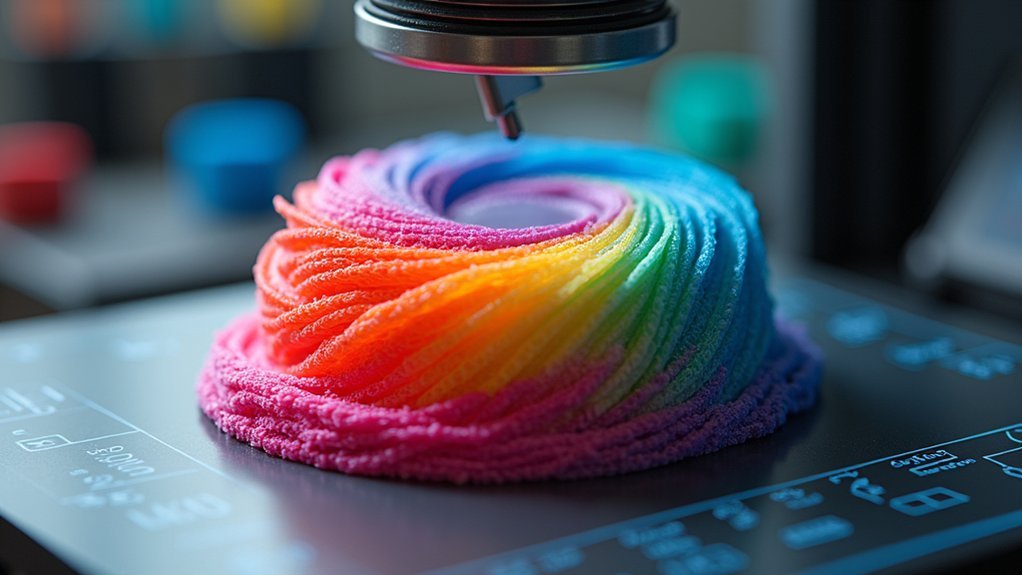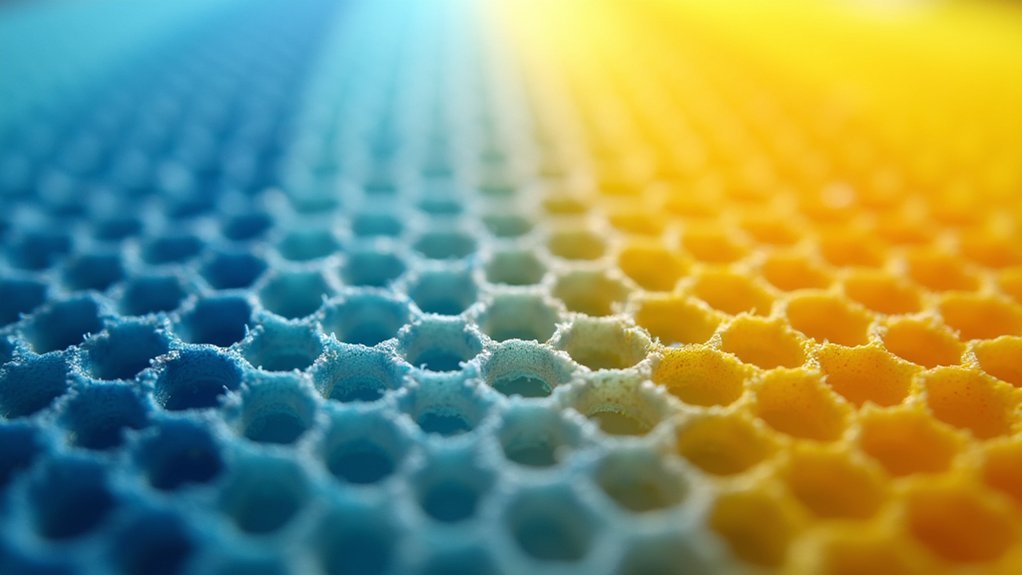You’ll master PrusaSlicer’s infill gradients by setting up height range modifiers through right-clicking your model and selecting “Add Modifier.” Configure specific infill percentages for each layer range—like 30% density for the first 120 layers and 60% for upper sections—using the modifier’s settings panel. Manage multiple gradients by stacking modifiers and clicking “Add Settings” for expanded infill options that optimize material usage while maintaining structural integrity. These techniques reveal sophisticated density variations throughout your prints.
Setting Up Height Range Modifiers for Variable Infill Density

When you need different infill densities throughout your 3D print’s height, PrusaSlicer’s height range modifiers provide precise control over these variations.
You can add these height range modifiers by right-clicking on your model and specifying the desired layer height ranges for variable infill density adjustments.
Within the modifier’s settings icon, you’ll adjust infill density settings by setting different percentages – for example, 30% for the first 120 layers and 60% for remaining layers.
Configure distinct infill percentages for different layer ranges, such as 30% density for initial layers and 60% for upper sections.
Multiple modifiers enable extensive customization across various print sections.
Navigate to the layers section in the right-hand panel for managing height values and using icons for adding or deleting ranges.
Clicking “Add Settings” opens additional infill types and parameters, allowing precise adjustments to meet specific print requirements through PrusaSlicer’s thorough adjusting infill capabilities.
Configuring Layer-Specific Infill Percentages Using Range Parameters
After establishing your height range modifiers, you’ll configure specific infill percentages for each layer range through PrusaSlicer’s parameter settings.
Each height range modifier permits direct adjustments to infill density within its designated boundaries. You can set precise infill percentages by accessing the modifier’s settings panel and specifying your desired values for each layer-specific section.
For complex infill configurations across your model, you’ll need multiple height range modifiers targeting different vertical sections.
PrusaSlicer enables you to stack these modifiers, creating sophisticated density variations throughout your print. Access additional parameters by clicking “Add Settings,” which reveals expanded infill options for fine-tuned control.
This approach allows you to optimize material usage while maintaining structural integrity where your model requires varying strength levels across different heights.
Managing Multiple Infill Gradients With Advanced Modifier Controls

Managing complex prints with varying structural requirements demands precise control over multiple height range modifiers working in sequence.
You’ll access these by right-clicking your model and selecting “Add Modifier” from the context menu. Each modifier lets you adjust infill settings for specific height ranges, creating customized infill gradients throughout your print.
The range panel enables precise adjustments of height values, ensuring infill density changes occur exactly where needed.
You can add or delete modifiers using icons in the layers section for streamlined management of gradient sequences.
Clicking “Add Settings” expands your control with additional infill types and layer adjustments.
This thorough approach to modifier management delivers optimized print performance by strategically placing varying infill densities where structural demands require them most.
Frequently Asked Questions
What Is the Best Infill Setting for Prusaslicer?
You’ll want 15-20% infill density with gyroid pattern for most prints. It’s perfect for balancing strength, speed, and material usage. Adjust higher for functional parts or lower for decorative items.
Is 40% Infill Too Much?
You’ll find 40% infill excessive for most prints, dramatically increasing material usage and print time. Unless you’re creating functional parts needing extra strength, you’d achieve better results with 10-20% infill instead.
Is 30% Infill Good?
You’ll find 30% infill excellent for functional parts needing strength and durability. It’s ideal when you’re printing load-bearing objects, though it’ll increase material usage and print time compared to lower densities.
Is 60% Infill Strong?
Yes, you’ll find 60% infill provides excellent strength for demanding applications. It’s ideal when you’re creating functional parts or mechanical components that’ll face significant stress, though it’ll increase print time and filament usage.





Leave a Reply